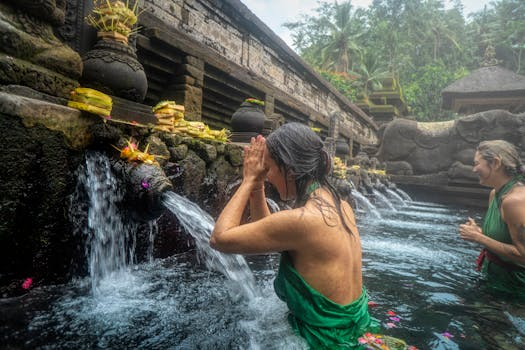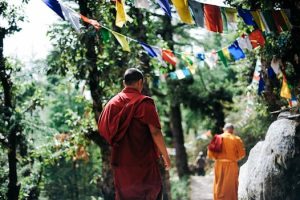Ritual Migrations: Experiencing Sacred Human Ceremonies
Throughout human history, rituals have played a significant role in shaping cultures and communities. These ceremonies serve as a way of marking important events, expressing beliefs and values, and connecting with a higher power. One unique aspect of rituals is their universality, as they are found in various forms across different societies and religions. Among these diverse traditions, one type that stands out is ritual migrations, where individuals or groups travel to sacred locations to experience powerful and transformative ceremonies. In this article, we will explore the concept of ritual migrations and how it offers a unique and meaningful way to connect with sacred human ceremonies.
The Purpose of Ritual Migrations
The term “ritual migration” refers to the journey individuals or groups undertake to participate in a specific ritual or ceremony. These migrations are often associated with specific sacred sites or locations that hold deep spiritual or cultural significance. The purpose of ritual migrations can vary depending on the context and traditions of the ceremony. Some view it as a form of pilgrimage, a spiritual journey to deepen their faith and connect with their deity. Others may see it as a way to honor their ancestors or pay homage to their cultural heritage.
One common purpose of ritual migrations is seeking healing and purification. Many ceremonies involve rituals of cleansing and purification, with the belief that it can cleanse the body, mind, and soul of negative energies and bring balance and harmony. For example, the Hindu pilgrimage to the Ganges river is seen as a way to wash away one’s sins and attain spiritual purity. Similarly, the Wailing Wall in Jerusalem is a sacred place for Jewish people, where they come to pray for forgiveness and healing.
The Experience of Ritual Migrations
Participating in a ritual migration is a unique and powerful experience. It is often a physically and emotionally demanding journey that requires dedication and sacrifice. The process of preparing for the journey, such as fasting or practicing specific rituals, is also an essential part of the experience. It is believed that these preparations help individuals enter a state of spiritual readiness and open themselves to the transformative power of the ceremony.
Once individuals reach the sacred site, the energy and atmosphere are palpable. Whether it is the natural surroundings or the presence of other pilgrims, there is a sense of shared spirituality and connection. The rituals themselves involve a series of symbolic actions, such as offerings, prayers, and chants, which are believed to have a deep meaning and purpose. The experience can be intense and may even lead to altered states of consciousness, with some participants describing feelings of transcendence and unity with a higher power.
The Significance of Ritual Migrations
For those who participate in ritual migrations, it is not just about ticking off a bucket list or gaining bragging rights. It is a sacred and transformative experience that can have a profound impact on their lives. The physical journey and the symbolic actions involved in the ritual are expressions of faith, devotion, and surrender. It is a way to connect with something bigger than oneself and to feel a part of a larger spiritual community.
Ritual migrations also play an important role in preserving cultural heritage and traditions. Many ceremonies have been passed down through generations, and participating in them keeps these practices alive. It allows individuals to connect with their ancestors and feel a sense of belonging to their cultural roots.
In Conclusion
Ritual migrations offer a unique and powerful way to connect with sacred human ceremonies. They provide individuals with the opportunity for spiritual growth, healing, and connection with their culture and faith. The physical journey and the rituals involved serve as a tangible manifestation of one’s beliefs and values, making the experience of ritual migrations a truly transformative and meaningful one.










